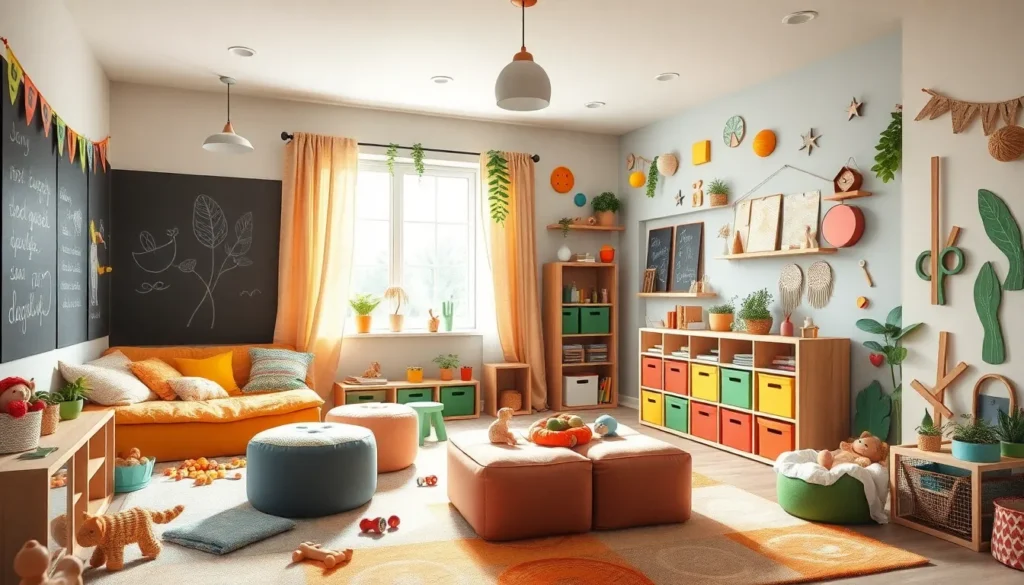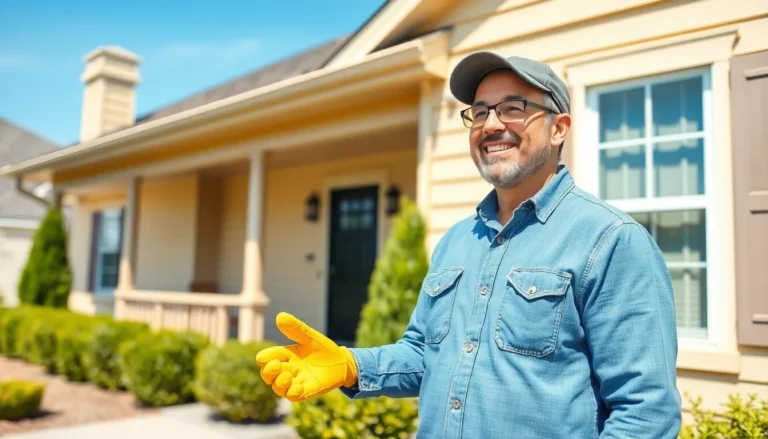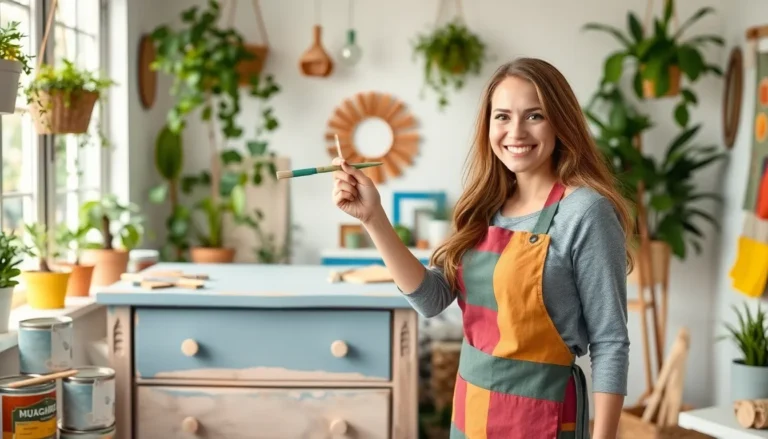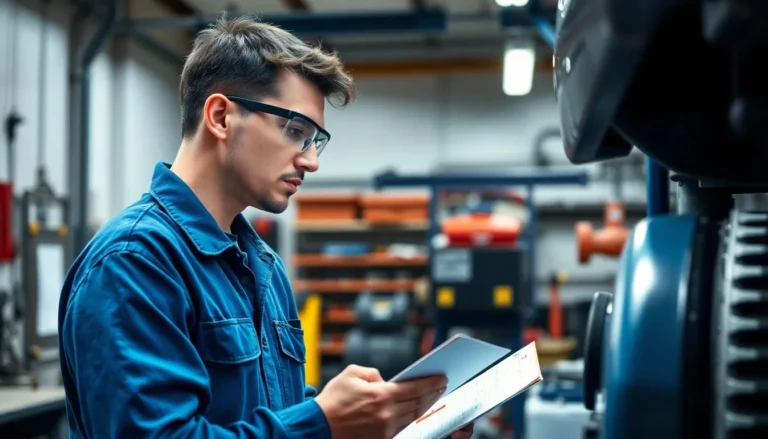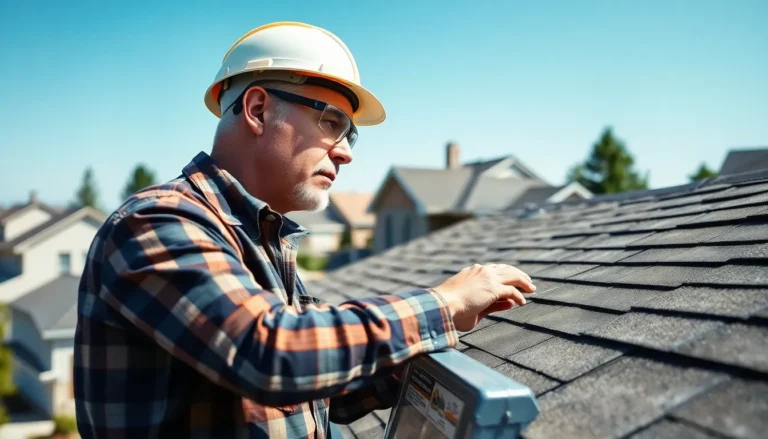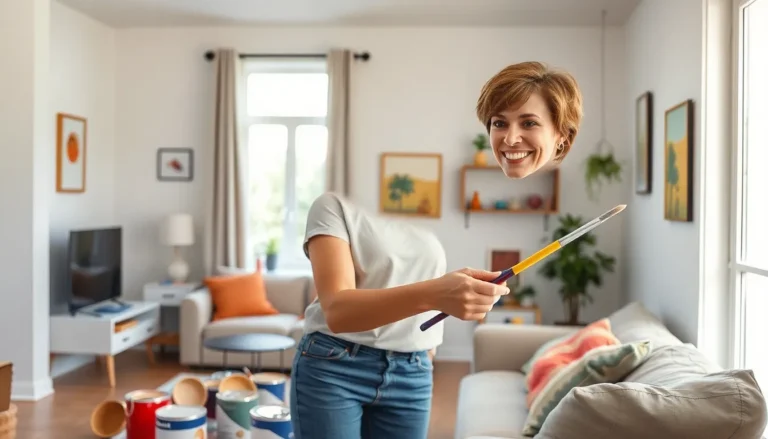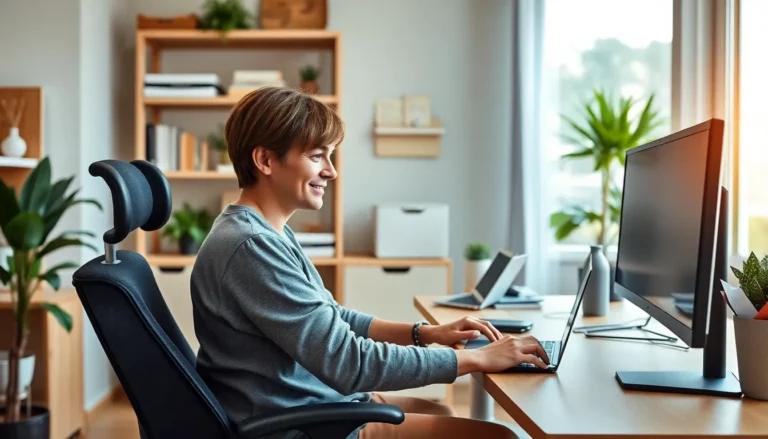Transforming a corner of the house into a kids’ playroom can feel like a daunting task, but it doesn’t have to be. With a sprinkle of creativity and a dash of DIY spirit, parents can create a magical space where imagination runs wild and chaos reigns supreme—just like a toddler’s favorite superhero.
Table of Contents
ToggleCreative DIY Kids Playroom Ideas
Creating an engaging playroom requires innovative ideas that match children’s energy and imagination. First, consider vibrant wall colors to energize the space. Shades like turquoise or yellow stimulate creativity and joy.
Next, incorporate a reading nook. Soft pillows, a small bookshelf, and cozy lighting encourage a love for books. Adding playful, colorful rugs enhances comfort and safety while delineating the play area.
Think about constructing a chalkboard wall. This feature allows kids to freely express their creativity with drawings or notes. Install easy-to-reach shelves to store art supplies, promoting independent play while teaching organization skills.
Introduce multi-functional furniture. Choose storage ottomans or benches that double as seating and storage solutions. This approach optimizes space while keeping the area tidy.
Designate a craft corner filled with supplies like colored paper, crayons, and paints. Such a setup inspires imagination and fosters hands-on learning. Adding a small table and chairs encourages collaborative projects.
Use DIY storage solutions. Recycled bins or labeled boxes not only keep toys organized but also introduce children to sustainability concepts.
Incorporate sensory elements, such as textured wall hangings or tactile mats. These features stimulate the senses and enhance imaginative play.
Finally, consider different zones within the playroom. Creating areas for art, reading, and active play provides children with varied experiences. With careful planning, the playroom becomes a dynamic space that adapts to different activities, keeping kids engaged and excited.
Space-Saving Solutions
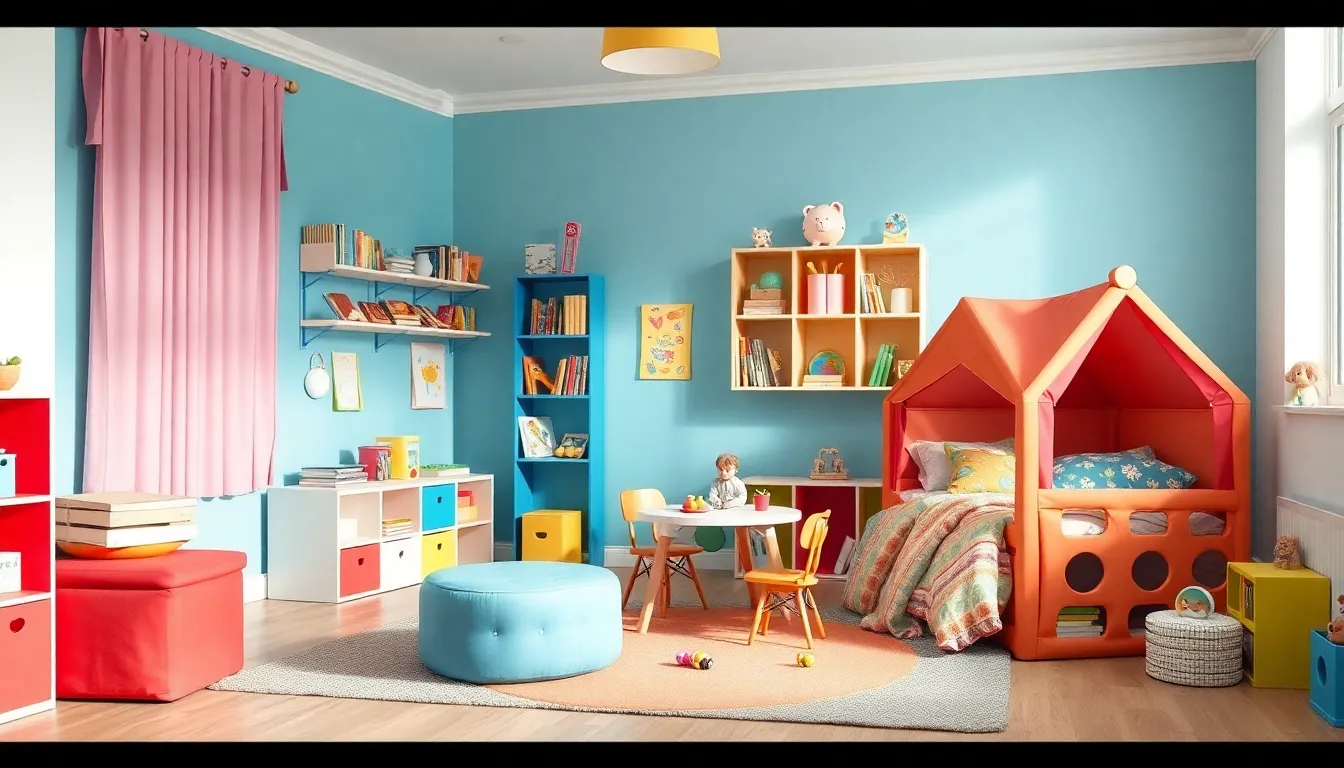
Creating an effective playroom requires innovative space-saving solutions that cater to a child’s needs while maximizing available area.
Multi-Functional Furniture
Choosing multi-functional furniture transforms the playroom into a flexible space. Storage ottomans provide seating and a place to store toys, while foldable tables offer room for crafts without occupying too much space. Using a bed that doubles as a playhouse allows for imaginative play and sleeping, catering to both activities. Each piece should serve multiple purposes, ensuring efficient use of every inch. Desks that convert into art stations can inspire creativity and learning while keeping surfaces tidy. Such designs enhance playtime and streamline organization.
Vertical Storage Options
Utilizing vertical storage introduces efficiency to the playroom. Wall-mounted shelves create ample space for books and toys, keeping them off the floor while maintaining accessibility. Hanging organizers provide additional compartments for art supplies and small toys, ensuring everything has its place. Opting for tall shelving units maximizes storage without sacrificing floor area. Using pegboards allows flexibility in displaying art supplies, making them easy to reach. Elevating storage options keeps the space uncluttered, enabling children to focus on play.
Fun and Engaging Themes
Creating fun and engaging themes captures children’s imagination. Incorporating unique elements brings life to any playroom.
Colorful Play Zones
Bright colors stimulate a child’s creativity. Splashes of red, blue, and yellow in designated play zones encourage active play. Choose colorful rugs to demarcate areas for different activities, such as reading, crafting, and playing. Wall decals with vibrant themes transform dull walls into exciting backdrops. Adding playful bean bags provides comfortable seating for children during activities. Various sensory bins filled with brightly colored materials enhance tactile exploration. Designing distinct spaces ensures that each area feels inviting and encourages exploration.
Nature-Inspired Decor
Nature-inspired decor fosters a calming atmosphere in a playroom. Incorporate elements like wooden toys and plant motifs to create an organic feel. Using soft green and earthy tones promotes a serene environment. Opt for wall art featuring animals or landscapes to spark curiosity about the natural world. Adding indoor plants can purify air and bring liveliness into the space. Natural textures, such as jute rugs or cotton curtains, enhance the theme. Incorporating these aspects not only beautifies the playroom but also supports imaginative play, connecting children with nature.
Sensory Play Areas
Sensory play areas engage children’s senses, support developmental growth, and enhance creativity. These spaces encourage exploration and hands-on learning, making them essential in any kids’ playroom.
DIY Sensory Bins
DIY sensory bins allow children to explore different textures and materials. Parents can fill bins with rice, beans, sand, or water beads to create varied sensory experiences. Adding scoops, small toys, or natural elements like rocks promotes imaginative play. Each bin can serve a specific theme, such as ocean, garden, or construction, enabling focused learning. Quick and easy to assemble, these bins often fit within storage solutions for convenience.
Textured Wall Features
Textured wall features foster tactile interaction and visual stimulation. Wall panels made of fabric, cork, or foam create dynamic surfaces where kids can touch and explore. By incorporating various textures, parents enhance visual appeal and encourage sensory exploration. Painting sections of the wall with different colors offers stimulating contrasts while maintaining a playful atmosphere. Each textured area invites children to engage, promoting curiosity and creativity in their play environment.
Budget-Friendly DIY Projects
Creating a kids’ playroom on a budget can be both fun and rewarding. Several budget-friendly DIY projects enable parents to craft unique spaces without overspending.
Upcycled Materials
Upcycled materials offer economical solutions for playroom construction. Cardboard boxes become imaginative forts or storage bins. Old pallets transform into creative wall art or rustic shelving. Reusing glass jars for craft supply organization supports eco-friendly practices. Finding new uses for discarded items encourages resourcefulness while providing a playful atmosphere. The tactile experience of various textures enhances children’s exploration. Upcycling not only saves money but also fosters creativity and environmental awareness.
Thrift Store Finds
Thrift stores provide an array of inexpensive treasures for playroom decoration. Wooden furniture can be refashioned with a fresh coat of paint, creating unique pieces that fit the space. Vintage toys spark nostalgia while serving as decorative items. Plush seating options often emerge as budget-friendly finds for comfort during playtime. Unique wall art sourced from thrift shops can personalize the room. By selecting second-hand items, families enhance the playroom’s charm without exceeding their budget. Thrift shopping also promotes sustainable practices, turning previous owners’ discards into valuable additions.
Creating a DIY kids’ playroom can be a rewarding experience that fosters creativity and imagination. By incorporating vibrant colors and engaging themes parents can transform any space into a dynamic environment that encourages play and exploration. Utilizing multi-functional furniture and innovative storage solutions not only maximizes space but also keeps the area organized and clutter-free.
Emphasizing sensory play areas and hands-on learning experiences ensures that children remain engaged and curious. With budget-friendly projects and upcycled materials families can personalize their playroom while promoting sustainable practices. Ultimately the right approach can turn a simple corner of a home into a magical haven for children to grow and thrive.

